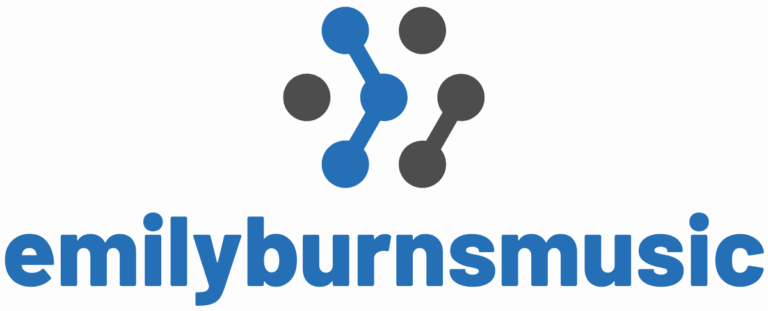In a world overflowing with information and distractions, finding creative clarity can feel like searching for a needle in a haystack—while blindfolded. It’s that magical state where ideas flow effortlessly, and inspiration strikes like lightning. But let’s face it, most days are more about dodging interruptions than diving into a creative sea of possibilities.
Imagine waking up each day with a clear mind and a vision that’s sharper than a chef’s knife. Creative clarity isn’t just a buzzword; it’s the secret sauce that can turn mundane tasks into masterpieces. Whether you’re brainstorming for a project or simply trying to make sense of your to-do list, unlocking this clarity can transform the way you work and live. So let’s embark on a journey to discover the tips and tricks that’ll help anyone cut through the chaos and unleash their inner genius.
Table of Contents
ToggleUnderstanding Creative Clarity
Creative clarity refers to the state where individuals experience clear thoughts and fluid ideas. This fosters an environment conducive to innovation and productivity.
Definition of Creative Clarity
Creative clarity encompasses mental focus and a vivid vision for projects. It emerges when distractions diminish, allowing one to access and express unique ideas. An individual in this state can easily connect concepts, resulting in cohesive and innovative outcomes. Establishing routines that promote tranquility can enhance this clarity. Practicing mindfulness or engaging in activities like journaling supports this mental state, enabling effortless idea generation and clearer decision-making.
Importance in the Creative Process
Creative clarity plays a vital role in the creative process. When individuals achieve this state, they maximize their potential for innovation and quality output. Clarity helps streamline thoughts and reduces the noise that typically impedes creativity. It allows for deeper exploration of ideas, fostering connections between seemingly unrelated concepts. Individuals equipped with this clarity often produce work that resonates and inspires. Embracing techniques that encourage clarity ultimately transforms chaotic thoughts into structured and impactful ideas.
Benefits of Creative Clarity

Creative clarity brings numerous advantages that enhance overall performance. This mental state significantly influences focus and productivity.
Enhanced Focus and Productivity
Enhanced focus emerges when individuals experience creative clarity. Clear thoughts limit distractions, enabling deeper engagement with projects. Tasks that once felt overwhelming become manageable, resulting in higher levels of efficiency. As people concentrate better, they often accomplish goals more quickly. Innovative ideas thrive in focused environments, leading to breakthroughs that were previously unattainable. Moreover, regular practice of techniques that foster clarity can solidify this focus, reinforcing consistent productivity.
Improved Problem-Solving Skills
Improved problem-solving skills result from a mind freed of clutter. Creative clarity allows individuals to view challenges from fresh perspectives, prompting innovative solutions. New ideas and unique approaches become apparent without the interference of distraction. Critical thinking thrives as clarity helps individuals analyze problems more effectively. Structured thoughts also lead to well-considered decisions, reducing frustration in complex situations. Ultimately, a clear mind encourages exploration of diverse solutions, increasing the likelihood of successful outcomes.
Techniques to Achieve Creative Clarity
Creative clarity can be cultivated through various techniques that help streamline thoughts and ideas. These methods create an environment where creativity thrives.
Mind Mapping
Mind mapping serves as a powerful visual tool for organizing thoughts. Individuals capture ideas radially around a central concept, which promotes free association. Each branch represents related ideas, creating connections that enhance understanding. This technique allows for an overview of complex subjects. It transforms disorganized thoughts into structured formats. Several software programs and apps support digital mind mapping, making it easily accessible. To maximize effectiveness, allocate regular time for mind mapping sessions.
Journaling and Reflection
Journaling encourages deeper reflection and self-discovery. Everyday writing fosters a space where thoughts can flow without judgment. This practice helps identify recurring themes and insights. Individuals gain clarity on their goals through consistent journaling. Dedicated time for reflection enhances self-awareness, leading to informed decision-making. Consider setting aside 10 to 15 minutes each day for writing, as this can boost creativity. Journaling further acts as a repository for ideas, allowing easy retrieval for later projects.
Overcoming Obstacles to Creative Clarity
Achieving creative clarity requires addressing common obstacles that hinder focus. Distractions come in various forms, often interrupting the flow of ideas.
Common Distractions
Digital notifications frequently pull attention away from tasks. Social media platforms, emails, and texts disrupt concentration and divide focus. Environmental factors, like noise levels, can also contribute to a cluttered mind. Excessive multitasking leads to fragmented thoughts, reducing the ability to engage deeply with ideas. The presence of these distractions stifles creative expression, making it difficult to generate innovative solutions.
Strategies for Minimizing Disruptions
Establishing a distraction-free environment proves essential for fostering creative clarity. Designate specific times for checking emails and social media to limit interruptions. Utilizing apps that block notifications during focused work sessions helps maintain concentration. Creating a dedicated workspace can also enhance productivity by signaling to the brain that it’s time to work. Incorporating techniques such as the Pomodoro Technique encourages short, focused bursts of activity alongside useful breaks. These strategies collectively minimize disruptions, making room for deeper exploration of creative ideas.
Creative clarity is essential for anyone looking to unlock their full potential. By minimizing distractions and adopting techniques like mind mapping and journaling, individuals can foster an environment where creativity flourishes. This clarity not only enhances focus but also transforms mundane tasks into opportunities for innovation.
When the mind is clear, ideas flow effortlessly and problem-solving becomes more intuitive. Embracing practices that promote tranquility allows for deeper exploration of thoughts, resulting in work that resonates and inspires. Ultimately, prioritizing creative clarity can lead to significant improvements in productivity and satisfaction in both personal and professional endeavors.




